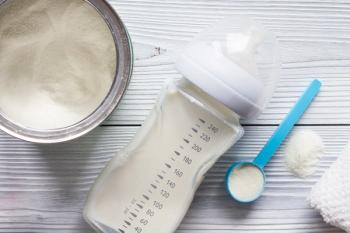Interview highlights
- Toddler formulas are increasingly popular but cause confusion among parents and healthcare providers due to lack of regulation and branding similarities with infant formulas.
- Unlike infant formulas, toddler formulas are unregulated and not nutritionally complete. They are often misunderstood as essential supplements for toddlers.
- Pediatricians emphasize breastfeeding and, if needed, infant formula until 12 months. Afterward, a varied diet with cow milk suffices, making toddler formulas unnecessary and cost-prohibitive.
- Parents wrongly believe toddler formulas offer unique nutrients, but studies show most children's diets are sufficient. Nutritional gaps can be addressed without expensive toddler drinks.
- Toddler formulas are 20 times more expensive than cow milk, causing financial strain on families, despite the perceived benefits, which are often not substantiated by scientific evidence.
Interview transcript (edited for clarity):
Contemporary Pediatrics®:
Why did you want to discuss toddler formula at the 2023 American Academy of Pediatrics National Conference & Exhibition?
George J. Fuchs, III, MD, FAAP:
There's a category of nutritional products that go by a variety of names, but they're targeted primarily for toddlers 12 months and older, subgroup begin 6 months, and they have increased tremendously in terms of their presence in this country. There is a lot of confusion about these products by parents, other child caregivers, as well as pediatricians and child providers. So we thought it was time we review this category and try to determine where they fit in the options for young children.
Contemporary Pediatrics:
Can you explain the difference between infant formulas and toddler formulas, and how the confusion comes into play?
Fuchs:
Infant formulas, which are different, they're targeting infants 0 to 12 months of age, are regulated by the FDA, they have to be reviewed and approved. The facilities the production facilities are inspected on an annual basis, they are complete nutrition for an infant. The FDA has no category for children, after 12 months of age. It is 12 months of age to 22 years of age. So these products are entirely unregulated. They are not nutritionally complete. In other words, they're designed for healthy children consuming other foods. Now, part of the problem is that they have been co-branded with infant formulas, often with sequential names or similar logos, step 1, step 2, step 3, etc. So it implies that they are completing nutrition. It also implies that there's a formula continuum that is beneficial to the young child, and that's just not the case. So part of the confusion stems from how they're being presented by the companies to the public. I have to tell you, there's a tremendous amount of confusion amongst pediatricians and other health care providers as well.
Contemporary Pediatrics:
How can pediatricians counsel parents when it comes to toddler formula?
Fuchs:
I think number 1, breastfeeding is preferred. Even up through and beyond 2 years of age. Beginning about 6 months of age, we recommend introducing complementary foods, solid foods. So breast milk is number 1. If for whatever reason they are not providing breast milk to their infant, then infant formula for the liquid portion of the diet until 12 months of age. At 12 months of age, for an otherwise healthy child we just recommend a varied diet with whole cow milk. Or if it's child's risk for obesity then 2%, but cow milk. The toddler category drinks really provide no extra nutritional benefit. So there's nothing that it's providing that they can't get otherwise. I understand that some of the company sites studies that say that there are nutritional gaps in the diet of children, in fact, the studies that have been the most relied upon show that actually in general, they're quite adequate. So there may be some gaps in vitamin D, E, and fiber for the toddlers and infants and then iron particularly with the infants, but if they're taking iron fortified infant formula, which is now all important should be, they should be doing fine. Rather than switching to considerably more expensive toddler drink, just counsel the parents on how to what they should feed their child to fill any gaps. Most children don't have gaps by the way. I might mention that, it's not a scientific survey, but just going on the internet looking at Amazon and Walmart and Target, the cost differences really quite striking. The cow milk on average is about 2 cents to 6 cents per ounce. The cheapest I saw in toddler form was 30 cents per ounce. That's the cheapest. Most of them are much more expensive, up to $1.25 or more than that. So more than 20-times as expensive as cow milk. And most people don't have that disposable income. But what has happened is that there is a perception by parents, by mothers and surveys have shown this, that believe that these toddler drinks provide something that they can't get breast milk, or through a regular diet, cow milk.









